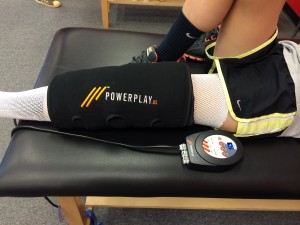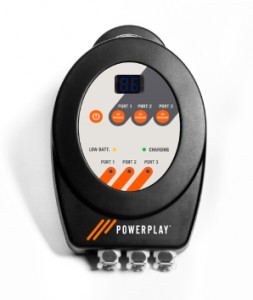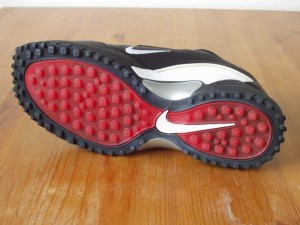Brian Schiff’s Blog
Injury Prevention, Sports Rehab & Performance Training Expert
I am a big proponent of cryotherapy in my rehab whether dealing with acute or even more chronic inflammation. I routinely use cryotherapy with compression via Game Ready in the clinic for post-op knee surgeries, ankle sprains, rotator cuff pathology, Little League shoulder, labral repairs, etc. I was recently contacted and asked to review a cryotherapy solution on the market – Power Play. Full disclaimer: I am not affiliated with POWERPLAY in any way nor was I paid to write this review.
My intent in writing this review is to share information about the product itself and its efficacy for use in the clinic as well as for the general public. Power Play shipped me the standard kit which includes a carrying case, the cold compression ankle and knee wrap as well as the pump and wall charger. The entire package is easily portable for the ATC on the go, and works well in the clinic because it has three ports on the unit making multiple treatments for patients with various body parts a cinch.
Below is a picture of one of my patients recovering from ACL reconstruction using the knee wrap:

The different body part sleeves include gel wraps that attach to the sleeves via velcro along with a stocking to protect the skin from the wrap. POWERPLAY advises placing the wraps in the freezer or refrigerator prior to use. I noticed that if you place them in the freezer and pull them out for immediate use they are stiff and do not conform as well as desired to the body. As such, I would advise taking them out at least 10-15 minutes prior to use.
In terms of compression, the default setting on the display reading is 50 mmHg of compression. You can increase compression in 5 mm increments up to 70 mmHg. This is easily done with the touch of a single button. The compressor runs for 20 minutes and then shuts off on its own, so if you desire lass than 20 minutes you would need to set a timer (not a big deal).

POWERPLAY pump
Overall, the unit is convenient to take on the road and very easy to use. The company states it will run the unit for 8-12 hours on one charge, and I find this to be accurate so far. Patient feedback is that they like the wraps and the level of pressure, and they are comparing it to the traditional GameReady clinic cryotherapy I use with them on a routine basis. The POWERPLAY unit is also definitely cold enough and comparable to all other forms of cryotherapy we have in the clinic.
I find the entire package is reasonably priced for the overall quality and portability of the product. I think it would be a worthwhile investment for PT clinics, ATCs on the go and a client looking to have a high quality cryotherapy solution at home while recovering from an injury or surgical procedure. I have long been a fan of cold and compression so I like this product, and I look forward to trying out their shoulder wraps next! Click here to learn more about POWERPLAY.
It has been known for years that increased coefficient of traction can predispose the knee to catastrophic injury. Hence, the reason we got rid of all the old style astro turf in football stadiums. But, traction is influenced by the sole architecture of the shoes as well as the playing surface. Unfortunately, we are not fully aware of how exactly the sole architecture or this increased traction can lead to injury.

Nike Astro Turf Shoe
Does footwear really matter? I say YES. Case in point – I am not a big fan of Nike Shox because they position the ankle in a plantar flexed position, thereby making it so much easier for ankles to roll inward with cutting. I have seen too many female athletes suffer inversion sprains while running suicides or training in these shoes. I simply believe the design creates a biomechanical mismatch and elevated risk for ankle sprains.
Now what about traction? A study in the American Journal of Sports Medicine by J Wannop et al. recently looked at the difference between two shoe designs in a controlled laboratory study. The tread types of shoes used were either smooth or tread.
The shoe used in the study was the adidas Response 2+ CPT (smooth shoe) and adidas Response=2(A) (tread shoe). The traction testing was performed using a robotic testing machine, while the researchers also observed 13 recreational athletes performing 45 degree V cuts in both shoes. Data was collected using 8 high speed cameras and a force plate.
The results are not shocking. The highlights are:
- The coefficient of translational traction and peak moment of rotation were both significantly higher in the tread show compared to the smooth shoe.
- In addition, the high-traction shoe had much higher peak ankle externalrotation moments, peak knee external rotation moments, peak knee adduction moments, and knee adduction angular impulse compared to low-traction shoe.
The findings of the study indicate that the resultant joint loading increased 12% in the ankle (transverse plane) and 13% and 20% in the transverse and frontal planes for the knee. This increased traction is certainly enough to push the knee into the previously reported mechanical rupture zone.
What we cannot deduce is whether the increases in joint loading is strictly attributable to the higher linear and rotational traction or if there is even a linear relationship between them at all.
You should also note that athletes often choose traction shoes for enhanced performance. In this study, there was no significant difference in the performance measured between the two groups. So, we are left to ponder whether we really need higher traction shoes at all. Future studies will need to address this relationship as preventing knee and ankle injuries just by adjusting footwear seems like a no-brainer if the science supports this.
So, I was meeting with a 14 y/o soccer player referred to me by a physical therapist today who is need of sports performance conditioning (return to play) work after a lateral release. This talented female athlete suffers from a shallow trochlear groove, thereby making her more prone to patella subluxations.
Such an incident led to two recent surgeries and nearly a year away from the soccer field. She has returned to soccer, but has been referred to me for prevention and performance work. I have been thinking about her program, history and all the athletes I have trained in recent memory with knee problems.
I also recall reading an email this weekend from a past intern asking me if there was a single leg training certification out there as she saw me do so much of it at my facility. These thoughts lead me to my post today. If you are a jumping, cutting or competitive athlete using your legs to perform, you should absolutely be integrating single leg training into your conditioning programs.

Why, do I say so? The answer is rather simple in my mind. The human body is often out of balance. The brain is so adept at mastering movement, it learns to compensate for even the slightest deficits on one side. Over time, you end up grooving improper motor patterns and these tend to lead to small imbalances or even overuse issues.
Ever hear about stretch weakness or adaptive shortening? Maybe you are familiar with the terms overactive and under active muscles? Regardless, I can assure you that at any given moment, your body may be susceptible to these patterns.
Through a poper single leg assessment, I see many issues come to light that may otherwise be hidden with two legged squats, lunges, leg press, etc. Let me go back to the young lady sitting in my office this morning. She has bilateral shallow trochlear grooves, yet only one knee to date has given way. Why so? Will the other one follow suit?
There is no way to definitively predict if her other knee will become problematic. But, my hunch is there were some single sided imbalances that may have led to her current injury history. It is now my job to try my best to prevent such an episode on her other knee, as well as make sure she does not have issues on the surgically repaired side.
Anything short of a program heavy on single leg work would be a mistake for her (and many others like her). You see, we often reinforce imbalances and poor technique with heavy squatting, lunging and dead lifts seen in traditional programs. I am not oppose dot these lifts – in fact they can be great for strength and power development.
However, we MUST address and correct the single sided imbalances first. We must also always include some single leg strength work with our athletes to ensure there is no asymmetry developed unknowingly. Most athletes compete using their own body weight. We must train in such a way that we foster control, power and mastery of movement with each limb.
This focus and approach will be most helpful in reducing injuries like ankle sprains, ACL tears, muscle strains and common overuse issues in the lower extremity. So, next time you think about performance training, I want you to consider the importance and relevance of single leg training. No program is perfect. But, I will tell you my track record is pretty solid with prevention, performance and return to play training I have done that relies heavily on this approach to conditioning.
Stay tuned as later this week I will unveil my latest DVD as well as review how traction with footwear affects lower limb joint loading.

